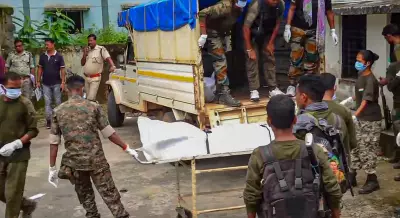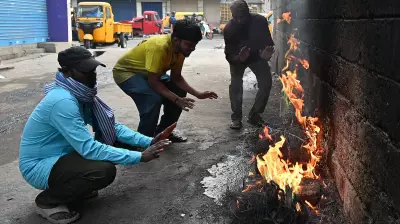Politics
3 Naxalites, Including Woman, Killed in Sukma Encounter with Security Forces
A woman among three Naxalites was killed in an encounter with security forces in Chhattisgarh's Sukma district on December 18. Police confirm the operation was based on specific intelligence.
Business
CCI Probes IndiGo Over Antitrust Violations After 4,500 Flight Cancellations
India's competition regulator is investigating IndiGo for alleged abuse of dominant position after mass flight cancellations caused a nationwide aviation crisis. Read the full details.
World
Trump Hints at Ukraine Deal: Security Guarantees Like NATO's Article 5 Proposed
Ahead of crucial US-Russia talks, Donald Trump suggests progress on Ukraine. A proposed peace deal could offer Kyiv security guarantees modeled on NATO's Article 5. Read the latest developments.
Entertainment
Four More Shots Please! Season 4 Release Date, Cast & Season 3 Recap
Get ready for 'Four More Shots Please!' Season 4 on Prime Video. Here's a recap of Season 3's emotional endings and what to expect next from the beloved Mumbai-based series.
Lifestyle
Health
Heavy Metals from Farming, Water Cause Health Crisis: Doctors
RMLIMS doctors warn that chemical fertilisers and arsenic in water are causing kidney, heart, and nervous system diseases. Learn about the risks and ongoing WHO collaboration.
Worms in Karnataka School Midday Meal Rice, Staff Suspended
Worms found in rice at a Karnataka government school midday meal. Officials suspend staff for negligence. Over 2.8 lakh children depend on the scheme in Koppal district.
UP's Healthcare Revolution: From BIMARU to Medical Colleges in Every District
CM Yogi Adityanath highlights UP's healthcare transformation post-Covid, with ₹1,300 crore allocated, 5.5 crore Ayushman cards, and a medical college in every district. Global experts discuss kidney health in Lucknow.
KGMU's Telemedicine CoE to Transform Rural Healthcare in UP
Uttar Pradesh establishes a Centre of Excellence for Telemedicine at KGMU to enhance eSanjeevani 2.0 services. Funded by BMGF, it will train doctors and improve remote consultations for villages. Discover how this initiative bridges the healthcare gap.
Bengaluru Doctors' Essential Winter Health Tips Revealed
Physicians in Bengaluru outline crucial winter health advice, from clothing choices to dietary changes, to combat seasonal illnesses and stay healthy. Read their expert recommendations.
Technology
Get Updates
Subscribe to our newsletter to receive the latest updates in your inbox!
We hate spammers and never send spam










































